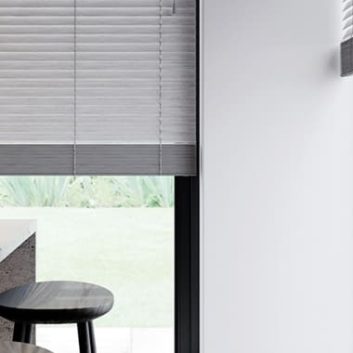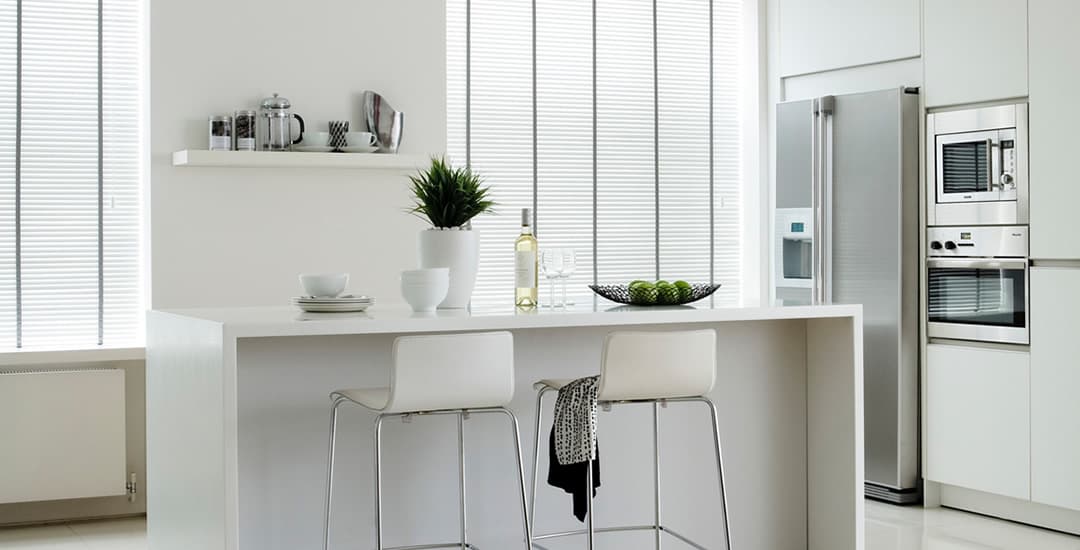
How do I choose the right blinds? This depends on what you want them to do, what challenges they may face while doing so, and the sort of look you want to achieve too. This means factoring in things like whether you need the blinds to be able to handle humidity or a wet environment, as well as how you want them to perform in terms of controlling the light and managing your privacy.
The aesthetics of things is really important too, because if your blinds fulfil both the letter and the spirt of the job you bought them for but just don’t have the sort of looks that appeal to you, you’re always going to secretly resent them, even as hard as they might be trying to make the relationship work.
So, how do you choose blinds for a room and cover all of your bases? In this blog post, I’ll look at the key points you need to consider that will help you to rule in or out all of the various different types of blinds on the market.
Whatever is left standing when you’ve finished will be your most suitable choices, from which you can make the ultimate decision based on your personal favourites and own taste.
Contents:
- 1. If you’re dealing with a wet or humid room, some blinds will be out.
- 2. Next, look at how challenging the window itself might be.
- 3. Consider your privacy management and light-filtering requirements.
- 4. How do I choose the right blinds if I’m on a tight budget?
- 5. How do I know what blinds to buy to match my tastes?
- 6. How do you choose blinds for a room based on its usage?
1. If you’re dealing with a wet or humid room, some blinds will be out
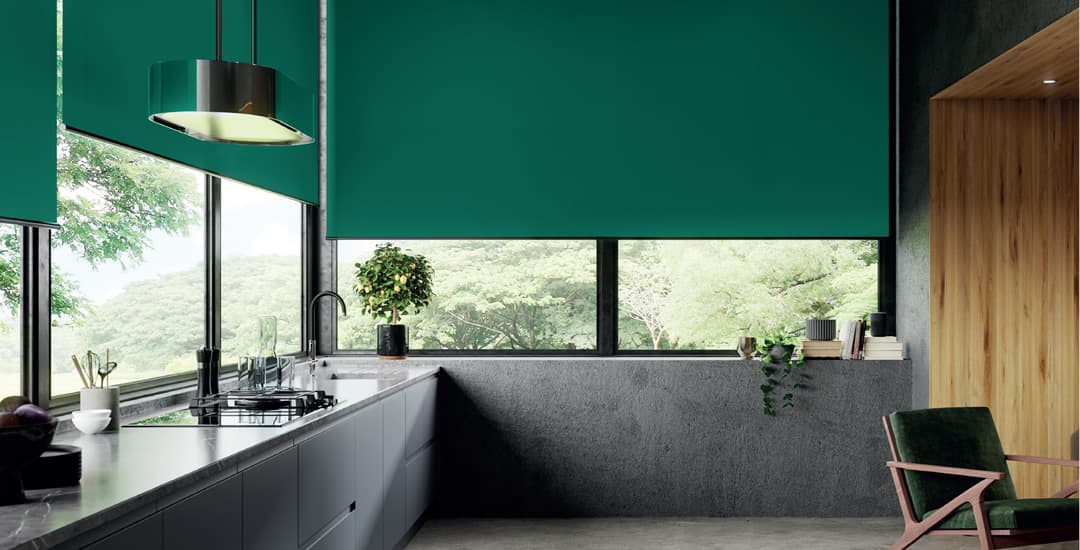
Some blinds might be out of the running immediately if they’re going to be used in rooms like the kitchen or bathroom where humidity and potentially direct contact with water are almost certainly on the cards.
So, how do I choose blinds for a room that’s likely to get splashy, condensated or humid? You need to pick one that’s made of, or can be made of, waterproof materials.
How do I choose the right blinds for humid rooms or wet environments?
- Faux-wood blinds are a safe bet here, as they’re totally waterproof by nature.
- Roller blinds and vertical blinds can be made in waterproof fabrics, being PVC or vinyl respectively, which makes them suitable for use in wet or humid rooms too.
- Venetian blinds can be used in rooms where a moderate level of humidity or occasional contact with water may occur as well.
What options should I rule out if I need blinds for a humid or wet room?
- Real wooden blinds are off the table if they are likely to get wet or be exposed to moisture on a regular basis.
- Roman blinds aren’t suitable for damp or humid rooms.
- Day and night blinds won’t work in damp or humid rooms, as they’re made of a non-water-resistant polyester.
- Most polyester roller or vertical blinds cannot be used in damp or humid rooms either, so always check the fabric before ordering!
2. Next, look at how challenging the window itself might be
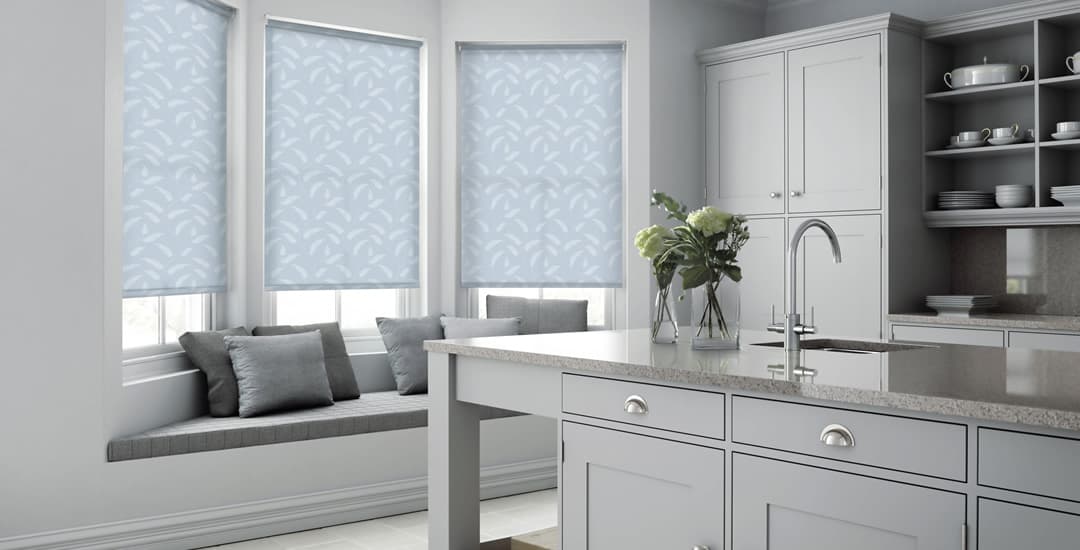
Ok, you may or may not have taken a few options off the table already if you’re dealing with a room that will tend to be wet or get humid. The next way to winnow down your talent pool of blinds is to consider if the window they’re going on is going to give you a moderate degree of grief for any other reason.
Generally, the types of windows most likely to be problematic or limit your options in terms of blind types are bay windows, and also windows that are very wide, tall, or both; like patio doors.
How do you choose blinds for a room with bay windows?
The type of blinds that may work on a bay window could potentially depend on some of the traits of your particular bay window, and this is a pretty in-depth topic all on its own. For this reason, I suggest you go and read my epic guide to bay window blinds, to get the full picture on which blinds will be ok and which won’t.
How do I know what blinds to buy for a wide, tall, or generally large window?
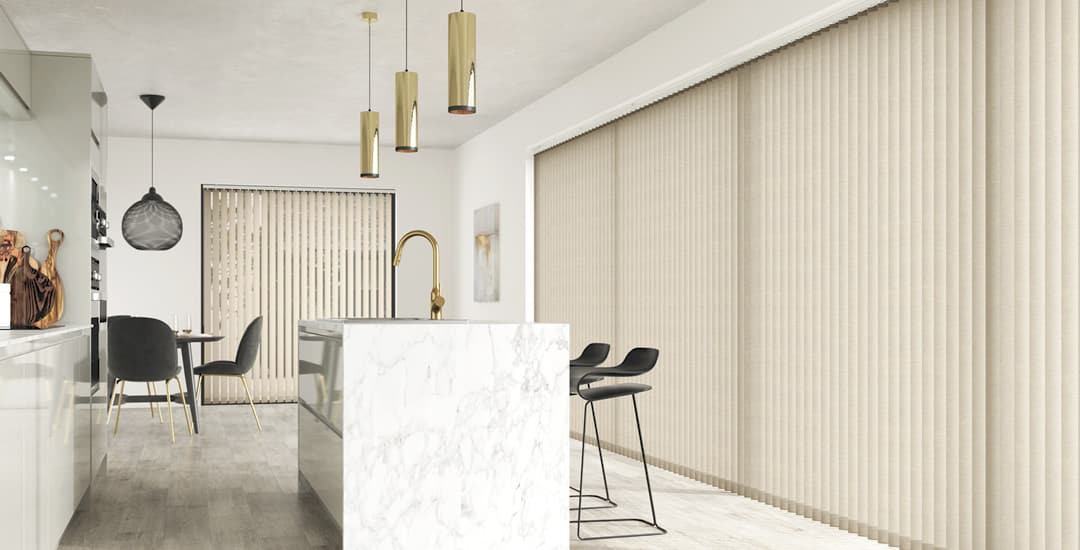
The limiting factor here is usually the weight of the blind; some blind materials are heavier than others, and when it comes to making blinds in larger sizes, this can cause problems.
Obviously there’s a top end size for any blind before the fabrication and shipping of it becomes impossible, but the greater issue is that a blind that weighs a tonne might stand a reasonable chance of coming off the wall, and possibly taking much of said wall with it. New builds, y’all…
Additionally, even if your wall itself is up to the challenge, operating a blind that’s really heavy can be difficult-to-impossible too, even for prime specimens of humanity like myself who just this very morning worked her way up to the 9kg hand weights in the gym. And has been looking for an opportunity to brag about that ever since… Anyway.
How do I choose the right blinds for a wide window?
- If your window is under around 2.8 – 3 metres in width, more or less all potential options will remain on the table.
- If your window is over 3 metres wide, your choices may be restricted to vertical blinds only, if you want just one blind to cover the whole window.
Alternatively, you can use multiple blinds of more or less any type hung side by side if this is an option (such as if the window itself is made of sections that the joins of the blinds can align with, rather than being just one huge uninterrupted pane of glass).
How do I choose the right blinds for a tall window?
- I’ve covered the best blinds for tall windows in some depth here, but to summarise, vertical blinds are again the most common/viable choice of uninterrupted blinds for tall windows.
- Roller blinds and day and night blinds will almost certainly be an option too for pretty much any length of drop, as long as the window isn’t also very wide (when the weight issue will creep back in).
- Any of the other blinds types including Roman blinds, Venetian blinds, wooden blinds, and faux-wood blinds might be a goer as well if the drop of the window isn’t huge (i.e., stretching for greater than about a storey or so of the house) and the window isn’t overly wide as well; failing which, the weight of all of these types of blinds will again become prohibitive.
3. Consider your privacy management and light-filtering requirements
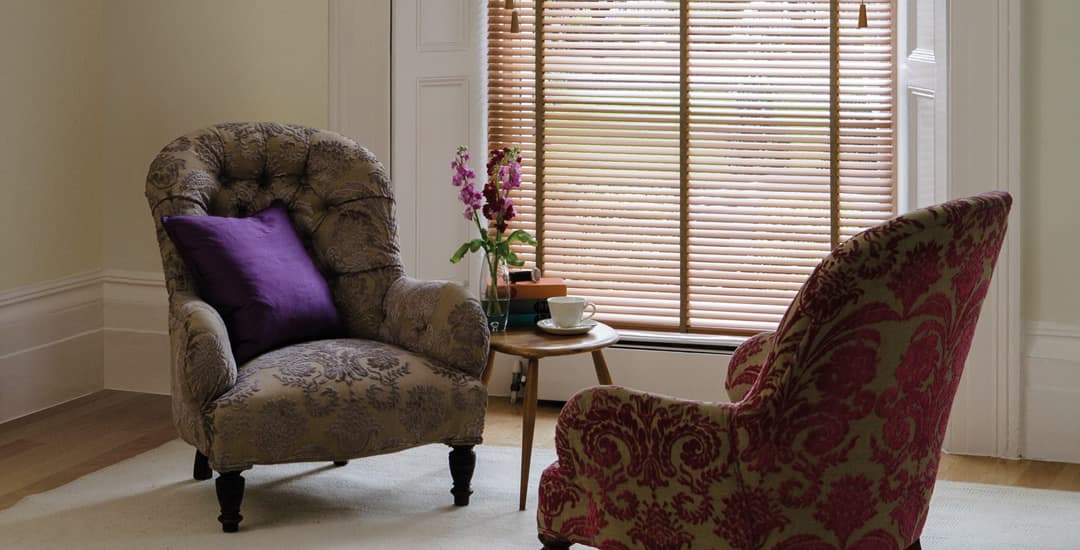
Now that we’ve covered some of the hard barriers that may stand between you and certain types of blinds, we’re getting into the realms of your personal preferences where the blind’s functions are concerned.
Your choices in terms of light-filtering and privacy can be summarised most simply with the following considerations:
How do I choose the right blinds if I want to block the light entirely rather than just dimming it?
For this you will want to choose blackout blinds; most other blinds are known as “dim-out” blinds, and these greatly reduce the lighting level but won’t block light entirely.
- If you are looking to block the light entirely, then roller blinds, vertical blinds, Roman blinds, and day and night blinds can all be made as blackout blinds.
- Wooden blinds, faux-wood blinds, and Venetian blinds too all block external light when fully closed, barring potentially a small amount of light leakage around the suspension cords and the sides of the blind.
Please bear in mind that how blackouty a blind is depends just as much on how you hang it as what type of blind it is, and proceed accordingly!
How do I know what blinds to buy if I want to filter but not necessarily block the light?
If you need to be able to filter the light (such as to take the edge off screen glare or to avoid directional rays of sun that bother you) but want to be able to achieve this without having to block the light entirely, you have several options:
- Day and night blinds, roller blinds, vertical blinds, Venetian blinds, faux-wood blinds, and real wooden blinds will all allow you to filter light.
- Day and night blinds and vertical blinds can be made in blackout options too, making all of the above options viable if you want blinds that can both be used to fully block external light and also at other times, just to filter it.
Do you want to try to maintain a good view of outside while making it harder for people outside to see in?
- Some blinds can be adjusted in a certain way to enable you to maintain a reasonable view of outside, while making it far harder for “outside” to see in in turn, unless it is dark out and you’ve got all the lights blazing away. This means that vertical blinds, Venetian blinds, faux-wood blinds, and real wooden blinds are all options.
- Day and night blinds are excellent for controlling your privacy while you enjoy the view too, albeit these work rather differently than the other candidates as they don’t have slats or louvres.
4. How do I choose the right blinds if I’m on a tight budget?
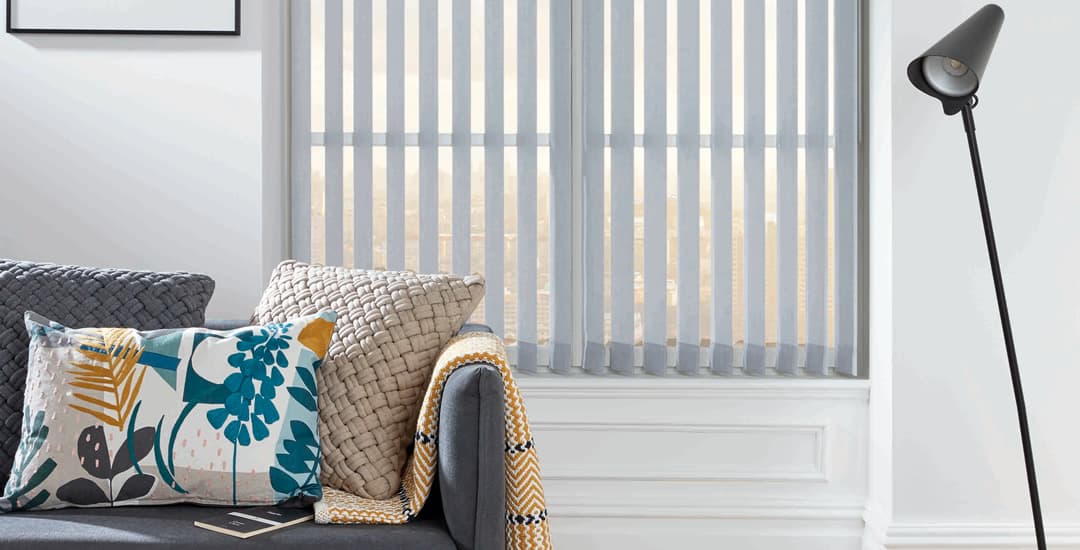
Different types of blinds for the same window can vary in cost by quite a significant amount, which may well be an issue if you’re working to a budget. For instance, if you need to buy lots of blinds or a blind for just one window that’s very large, cost might well be a limiting factor.
If you do have a strong preference for a certain type of window blind but are concerned it’s going to be outside of your budget, it is worth running the numbers all the same, as it may not cost as much as you think – and you can input your measurements on any of our product pages to get an exact price on the spot.
However, if you do find you need to keep your spend to a minimum or you just can’t justify the cost of the blind type you’d really like, here is a list of the different types of made-to-measure blinds ranked in order of their average price, from lowest to highest:
- Roller blinds (the lowest cost blinds as a rule).
- Venetian blinds
- Vertical blinds
- Faux-wood blinds
- Wooden blinds
- Day and night blinds
- Roman blinds (the most expensive blinds type as a rule).
This scale will almost always hold more or less true, but there may be a degree of crossover at times and you will tend to find that in many cases, the price difference between any two immediate neighbours in the list will only be a few ££, even for very large blinds.
As I say, it really is worth inputting the details of your window on the product page for the blind you really, really like before you automatically discount it as being too costly.
Also, consider checking out the immediate neighbours of the blind type you think you’re going to pick too if price is a large factor in your choice, just to see if your options perhaps become a lot wider for not a lot more cash.
5. How do I know what blinds to buy to match my tastes?
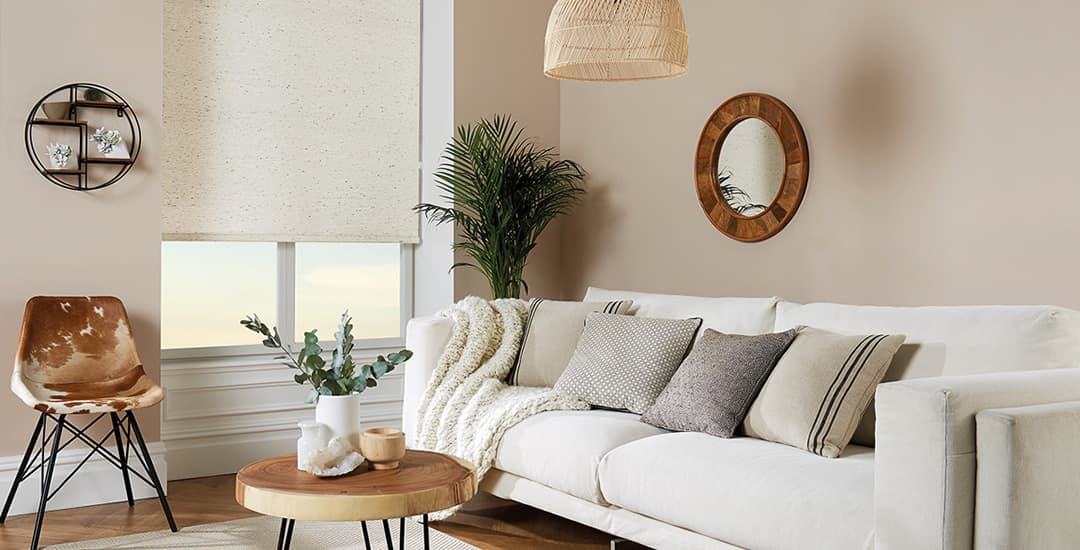
We’re on the downhill now, honestly! Now that I’ve covered all of the various factors that might mean you have to rule out specific blinds or on the flipside, have to pick specific others, we’re down to the final consideration; the aesthetics of it, or the look you want to achieve.
Something to think about before you begin picking styles is if you want your blind to hang inside or outside of the window recess; this can make a big difference to the look you achieve and how prominent the blind appears within the room as whole.
This, and also your styling choices, are all ultimately down to you; and in terms of me advising on what colours will work, what pattern or style you might like, or even what sort of material or finish could be to your taste, well I’m afraid I’m not touching that with a barge pole.
My idea of “looks nice, yeah” might be your idea of “Polly either has horrendous taste and should be stopped, or she comprehensively misled me in order to shift some ugly surplus stock…” Either way, I’m not leaving the company open to the type of Google reviews that would no doubt accompany that. I will, however, finish with some broad pointers and tips to get you going in this respect.
- If you’re looking for a really high-end, luxurious, timeless, and potentially (but not necessarily) classical look that screams prestige, think Roman blinds.
- If you want to be able to pick from the widest possible range of colours, patterns, and designs (including actual glow in the dark blinds) then roller blinds are where you want to head.
- If you have a lot of wooden furniture or the use of natural materials is important to you, think wooden blinds – these can be finished to match all of the most common wood types used for other types of furniture.
- For a slightly lower cost, faux-wood blinds look almost indistinguishable from the real thing.
- Vertical blinds come in a far wider range of colours and finishes than you might expect, as do Venetian blinds, both types of blinds that many folk seem to think can only be found in white or grey!
- For a minimalistic or modern-styled room, day and night blinds or zebra blinds are hard to beat.
- If you want to make your blind itself a feature, particularly on a larger window, consider bold or bright shades. However, bear in mind that these can swamp a smaller window or overpower a smaller room, and so you might want to think along more subtle lines.
- You could decide to get a blind in a feature colour that contrasts with the rest of the room, or on the flipside, one that blends in as seamlessly as possible.
- Light colours can make a room look airier, brighter, and even larger, while darker or warmer shades can make a room feel cosier and add depth to it.
6. How do you choose blinds for a room based on its usage?
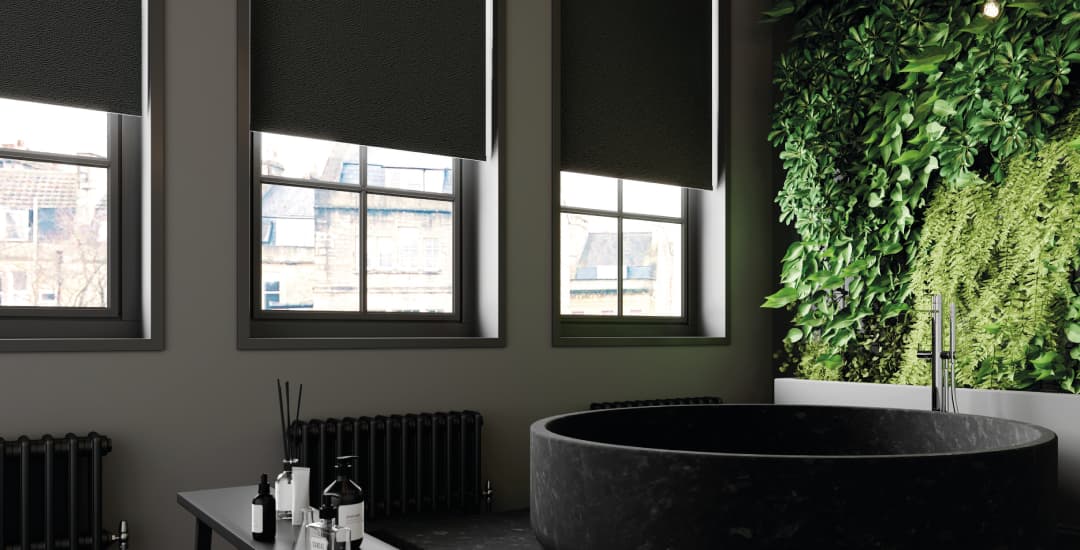
Finally, if you’re trying to pick blinds for a specific room, the way you use said room and its potential challenges might mean some types of blinds are going to be far better than others, as I alluded to earlier on in terms of blinds that can handle humidity and splashing.
To tie off then, please enjoy my links to detailed information for the vast majority of rooms you may potentially have within your chateau, which will give you a good steer on what the best blinds for each of them might be.
- What blinds are best for the bathroom?
- What blinds are best for the kitchen?
- What blinds are best for the bedroom?
- What blinds are best for the living room?
- What blinds are best for the dining room?
- What blinds are best for a home office?
- What blinds are best for the nursery?
- What blinds are best for the study?
- What blinds are best for the drawing room?
- What blinds are best for a playroom?
- What blinds are best for a gaming room?
- What blinds are best for attic windows?

